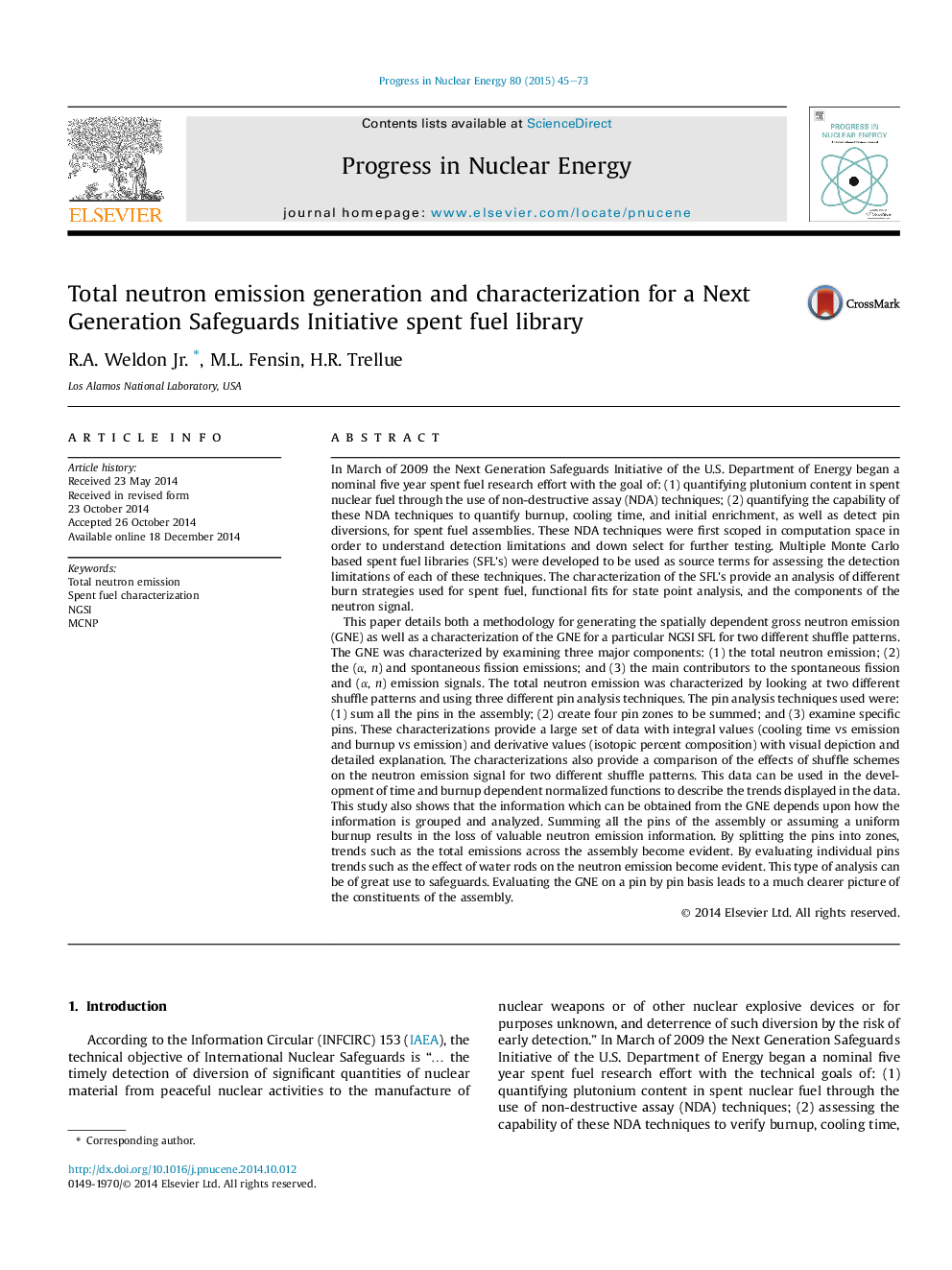| Article ID | Journal | Published Year | Pages | File Type |
|---|---|---|---|---|
| 1740490 | Progress in Nuclear Energy | 2015 | 29 Pages |
Abstract
This paper details both a methodology for generating the spatially dependent gross neutron emission (GNE) as well as a characterization of the GNE for a particular NGSI SFL for two different shuffle patterns. The GNE was characterized by examining three major components: (1) the total neutron emission; (2) the (α, n) and spontaneous fission emissions; and (3) the main contributors to the spontaneous fission and (α, n) emission signals. The total neutron emission was characterized by looking at two different shuffle patterns and using three different pin analysis techniques. The pin analysis techniques used were: (1) sum all the pins in the assembly; (2) create four pin zones to be summed; and (3) examine specific pins. These characterizations provide a large set of data with integral values (cooling time vs emission and burnup vs emission) and derivative values (isotopic percent composition) with visual depiction and detailed explanation. The characterizations also provide a comparison of the effects of shuffle schemes on the neutron emission signal for two different shuffle patterns. This data can be used in the development of time and burnup dependent normalized functions to describe the trends displayed in the data. This study also shows that the information which can be obtained from the GNE depends upon how the information is grouped and analyzed. Summing all the pins of the assembly or assuming a uniform burnup results in the loss of valuable neutron emission information. By splitting the pins into zones, trends such as the total emissions across the assembly become evident. By evaluating individual pins trends such as the effect of water rods on the neutron emission become evident. This type of analysis can be of great use to safeguards. Evaluating the GNE on a pin by pin basis leads to a much clearer picture of the constituents of the assembly.
Keywords
Related Topics
Physical Sciences and Engineering
Energy
Energy Engineering and Power Technology
Authors
R.A. Jr., M.L. Fensin, H.R. Trellue,
